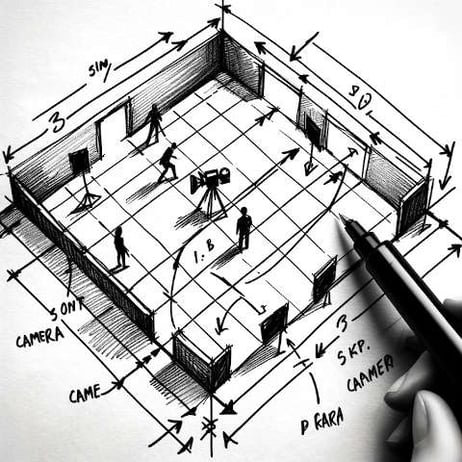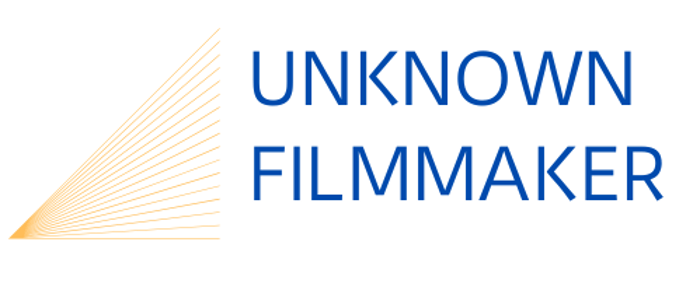Planning and Predicting Natural Light in Filmmaking: Tools and Techniques (Part 2 of 4)
Master the art of planning for natural light in filmmaking. Discover essential weather apps, tools for predicting sunlight, and techniques for scheduling around the sun. Part 2 of our comprehensive guide to natural light cinematography.
DIY FILMMAKING


Planning for Natural Light
The importance of scouting locations with natural light in mind can't be stressed enough.
This will help you determine the best time of day to shoot and what type of lighting conditions you will have to work with. You'll need to consider the mood and atmosphere you want to create and decide how to incorporate natural light in achieving the desired look.
Familiarize yourself with the location's natural lighting patterns. Communicate with your team and cast about the importance of natural light in the project, and discuss any concerns or ideas they may have.
Weather Apps & Tools for Predicting Sunlight and Filming Conditions
To succeed with the use of natural light is all about preparation and flexibility. In doing so, one of your most important steps will be to create a shot list specifically for natural light, and prioritize it during the shoot. Light changes quickly and you need to be ready for your desired shots.
Second, use apps to assist your planning.
Sun Surveyor
The Sun Surveyor App is widely used for tracking the sun’s and moon’s paths. Its AR feature is especially popular for visualizing the natural light during various times of the day and excels in real time, on-location scouting with its AR (augmented reality) feature to visualize the solar path in relation to the actual environment. Known for its visual, user-friendly experience.
TPE, The Photographer's Ephemeris
TPE, The Photographer's Ephemeris App, is highly popular among photographers and filmmakers for its detailed information on sun and moon positions and use in planning around natural lighting conditions and the effects of your location's topographical data. Offers a more data-centric interface.
Sun Seeker
The Sun Seeker App shows the movement of the sun throughout the day and how it will affect your designated location. It's a useful for determining the best time to shoot and how much light you can expect. It's widely used for its 3D AR view of the solar path, making it a favorite for understanding sun positions in relation to the filming location.
Helios
Helios tracks the movement of the sun and predicts when it will be at its best angle for your shoot. Providing information on cloud cover and other weather that may affect natural lighting.
Windfinder
The Windfinder App specializes in tracking wind and water conditions, making it particularly useful for outdoor shoots. It provides detailed information on wind speed, direction, and gusts, making it a go-to app for shoots where wind conditions are a critical factor. After all, wind can make or break audio, especially for exterior dialogue.
AccuWeather MinuteCast
AccuWeather's MinuteCast Feature provides minute-by-minute precipitation forecasts for a specific location, which is highly useful for precise planning on film sets. Their RealFeel Temperature offers a guide that accounts for factors like wind and humidity, giving a more comprehensive understanding of how the weather will actually feel. They are also known for their long-range forecast accuracy. Their interface is straightforward, focusing on delivering essential weather information quickly and clearly.
Why do I care about the moon's position?
It's a question one may wonder about when reading App descriptions.
The moon's position and phase can affect tides. If you're shooting near tidal bodies of water, the moon phase can be important for planning, especially if tide level matters.
In wide landscape composition, the moon’s presence and phase can add visual interest or dramatic effects to the shot. The moon can carry symbolic or thematic significance in film narratives.
The moon's position can affect natural ambient light. A full moon can provide a natural light source that can create a particular mood or aesthetic. This is especially relevant for films that aim for high realism in their night scenes.
Scheduling Around the Sun
Consider the direction of sunlight and shadows as it relates to your location and plan accordingly. Think about how the sun will light and cast shadows on your subjects. The light and shadow on your subjects and set will affect how your scene is experienced by the audience. Be aware of how shadows add depth or texture to your scenes.
Communicating with your team and cast about potential time constraints because of natural lighting conditions. So that they understand scenes may need to be shot at specific times of the day when lighting conditions are optimal. This will also help everyone involved be prepared and organized, leading to a more efficient shoot. The results of an efficient shoot aren't just measured in terms of time and costs savings, they're also apparent in your scenes effectiveness on screen.
Keep in mind the sun's position can affect the temperatures on set. This is especially important when planning a shoot during hot summer days, when it may become necessary to schedule exterior shots for early morning or late afternoon.
Have a flexible schedule to allow for adjustments and unexpected changes in natural lighting. Be prepared with backup plans. Make use of props and set design to enhance the effects of natural light. Such as using sheer curtains or strategically placed reflective surfaces, or being aware of any potential obstacles (such as buildings or trees) that may affect the availability of natural light at a specific location and time.
Collaboration and communication between the director, cinematographer, and other members of the production team is crucial when shooting in natural light. Everyone must be on the same page in terms of the vision for the project and how natural light will be used. It's also important for everyone to be flexible and adaptable, as natural light can be unpredictable and may require changes to the original plan.
In the end, collaboration between the director and cinematographer is key to ensuring that the use of natural light will align with the overall vision for the project.


By: SF Block
Writing about indie filmmaking.
This is part two of a multi-part series about filmmaking techniques regarding the use of natural lighting.
